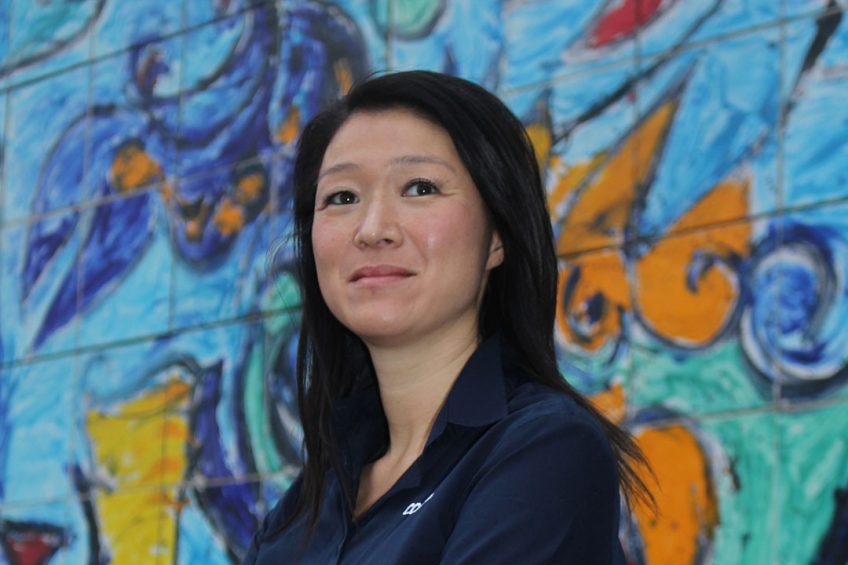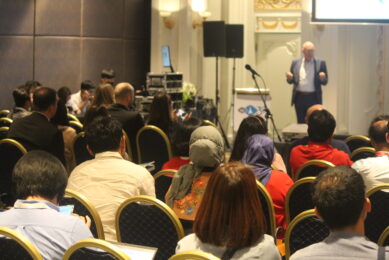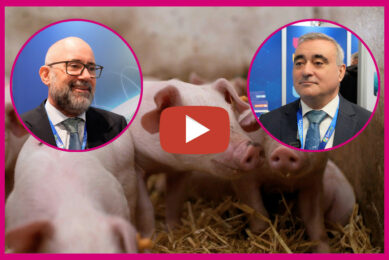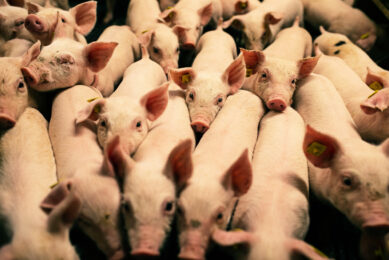Lisbeth Shooter from SEGES on alternatives to zinc oxide

About 34 months – that is all that is left before zinc oxide for therapeutic use in pigs is phased out in the EU. By 2022, Europe’s pig producers have to know how to wean pigs without using zinc oxide and AGPs, yet avoiding diarrhoea. Time for a summit on zinc oxide, the Danish pig industry thought. Chair of the event, to be held in June 2019, is Lisbeth Shooter.
Denmark is one of the leading pig countries in the world. Embedded in Northern Europe where the attention given to pig welfare and the environment is traditionally high, the country houses far more pigs than humans – with on average 286 pigs every km2. In that context it is no wonder that Denmark is often in the driver’s seat when it comes to innovating pig production and takes the lead when changes are imminent.
|
One of the new developments on the European horizon is the phasing out of therapeutic use of zinc oxide as a tool to reduce diarrhoea in just-weaned pigs. The European Union decided that by 2022, zinc oxide can only be used in pigs as a nutritional component, at levels of 150 ppm. Therefore, in just 3 years useful alternatives need to be available. Denmark’s SEGES Pig Research Centre does not want to sit and wait, but instead wanted to bring together all best practices, knowledge and experts. For that reason and for the first time SEGES has taken up the task of organising an international event, the ‘Zero Zinc Summit’, aiming at an attendance of up to 400 delegates from Europe and beyond, to discuss how to move on. Venue is Copenhagen, dates 17-18 June, driving force behind all that is Lisbeth Shooter.
Pig Progress: Why again did the EU decide to phase out zinc oxide at therapeutic levels as from 2022?
Lisbeth Shooter: “There were concerns about zinc building up in the environment and we were forced to look at how we could reduce the usage. There have been some links to antibiotic resistance as well.”
Do you feel that the new EU directive was justified?
“I am totally aware of the environmental impact and I appreciate that we need to address that. There is no doubt about that. The EU gave us 5 years, and it’s a difficult challenge, because there is no ‘one-answer’ solution. Therefore it takes a lot of effort for us and the farmers to come through this situation without it costing the farmers a lot of money.”
Why did Denmark feel the need to organise this zinc summit?
“This is an EU issue. However, when I looked around, to see what other countries were doing, it was hard to find out. I went to the UK, where they are partially hoping that Brexit will save them, so they won’t have to phase out zinc. We went to France, where they don’t seem to use a lot of zinc oxide, and we have been to the Netherlands, where they have already phased out the use of therapeutic zinc oxide to weaners. Here in Denmark, however, we have huge pressure for the reduction of antibiotics as well, so basically we need to wean without the use of zinc oxide and without increasing diarrhoea and without it compromising productivity and feed costs.”
“And although the EU ban is no later than 2022, the Danish authorities said: if we find viable solutions before 2022, we may look at phasing out zinc oxide quicker.”
So it is time to share experiences and let others hear about your opinion as well?
“We only have 3 years left now. And there is no way we can test everything from now until 2022, neither can our colleagues in Europe. Therefore we need to join forces while we can. One important thing is that this conference is more of an applied conference with an applied approach and science – science that the community can either use tomorrow on farms or take straight-away into further development. It is not a conference where we will be looking at e.g. detailed in vitro studies or complex microbiome research, which is very far from being put into practical use.”
Which are the key themes you will focus your attention on – and why those?
“We will focus on management, environment, feed, weaner quality, health and immunisation, and diagnostics and treatment. From our research and experience we found that these would be the critical topics that we need to have knowledge about, in terms of what to do and address on-farm.” (In the box below is an overview of some of the current Danish research initiatives in order to reduce zinc oxide in weaner feed.)
Zero Zinc research underway in DenmarkAt the Zero Zinc Summit, the results of various Danish researchers will be shared with delegates. Current projects include attention for:
|
So all in all, we need to look at keeping piglets healthy from a lot of different angles.
“In the past we looked at whether we could replace zinc oxide on a one-on-one basis with another product, and we haven’t been successful to be honest. What we have learnt is that we need to address this with a more holistic approach – so we need to do something on the feed side, on the management side and on the health side, etc. It forces the farmers to take a very good look at their production. If we tighten up in all areas, that we kind of consider critical for success, it will have some extra effects, not just on the diarrhoea and enabling them to wean without the zinc oxide, but it actually improves a lot of other things i.e. productivity in general in the same process.”
Having said that – how has the reaction been amongst Danish pig producers to reducing zinc levels?
“The general feeling was: Oh no, not another thing. A lot of people compare it to when we had to phase out the use of growth promoters.”
Did that development, about 15 years ago, bring good things to the Danish pig industry?
“Well, it definitely forced a lot of people to take a thorough look at their production to find out how to optimise and produce without the use of growth promoters. It required changes on many farms, which I think was actually positive. It was two years during which farmers said it cost them about 10 DKK (€ 1.34) per pig, but after that it stabilised and people came back to the levels of productivity they had before. Those were two quite expensive years.”
Is the use of zinc oxide in Denmark already going down, ahead of 2022?
“Yes, recent data showed we had a lower usage in 2018 compared to 2017. One thing is quite important: this is measured in total tonnes, and we have actually in the same period increased the numbers of pigs produced. So although we produced more pigs, we still used less zinc oxide.”
Lisbeth Shooter, SEGES Pig Research Centre:
We do see some farms that are completely withdrawing zinc oxide voluntarily
What has driven that?
“We did a trial, where we found out we can reduce the levels of zinc oxide in weaner feed to 1,500ppm. And it’s been implemented in some farm although not everywhere. Moreover, we believe that a fair number of producers are either reducing the zinc oxide level gradually, trying periods with no zinc oxide or completely stopping just to gain experience.”
And it still works at 1,500pm.
“Yes. And we do see some farms that are completely withdrawing zinc oxide voluntarily. And as to why, they say they’d better do it now and learn from the experiences. And because we can still use zinc oxide, in case the pigs all of a sudden have diarrhoea again.”
What do you hope the outcome will be of the event? When are you satisfied?
“One part of it is of course knowledge exchange. Can we find out what others are doing and learn from other’s experiences? It would help us in the right direction, or in the best-case scenario, we can re-use the experiences which others have gained, so we don’t have to reinvent the wheel ourselves. That’s the main purpose.”


 PROFILE
PROFILE








